The Lunar and Planetary Laboratory has published an obituary for Charles Sonnett.
Tag: Obituary
Michael J. Drake 1946–2011
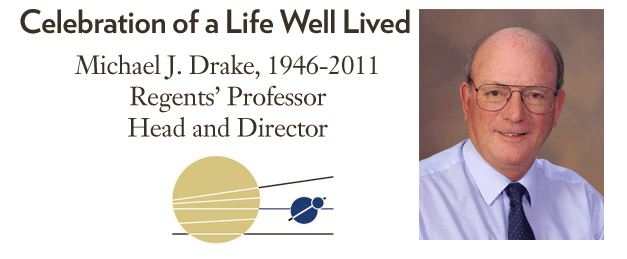
The Division for Planetary Sciences sadly announces that Michael J. Drake, Regents’ Professor, director of the University of Arizona Lunar and Planetary Laboratory and head of the department of planetary sciences, died September 21st at The University of Arizona Medical Center-University Campus in Tucson, Ariz. He was 65.
Drake, who joined the UA planetary sciences faculty in 1973 and headed LPL and the planetary sciences department since 1994, played a key role in a succession of very high-profile space projects that garnered international attention for LPL and the University such as the Cassini mission to explore Saturn, the Gamma-Ray Spectrometer onboard NASA’s Mars Odyssey Orbiter, the HiRISE camera onboard NASA’s Mars Reconnaissance Orbiter and the Phoenix Mars Lander. Drake was currently the principal investigator of the most ambitious UA project to date, OSIRIS-REx, a mission designed to retrieve a sample of an asteroid and return it to Earth.
Drake also was a Fellow of the American Geophysical Union, the Geochemical Society and the Meteoritical Society, and he was president of the latter two. He led a major undergraduate teaching effort in planetary sciences, even though the department was created as a graduate program.
He will be missed as a world-class scientist, a valued colleague and professor and a great contributor to Planetary Sciences.
The full story and photos are online at: http://www.uanews.org/node/42011 .
Angioletta Coradini 1946–2011
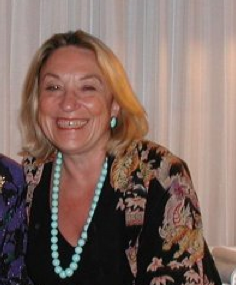 The Division for Planetary Sciences is very sad to announce that our valued colleague and friend, Angioletta Coradini, passed away on September 4, 2011. Angioletta Coradini started her scientific career in 1969 with her PhD thesis at the Rome University “La Sapienza” devoted to the origin of the glassy particles found in the lunar soils. She worked on lunar samples from the Apollo missions during the seventies, at the Istituto di Astrofisica Spaziale of the Italian National Reseach Council (CNR). At the same time she started to study the formation of the solar system, becoming a leading expert in that field.
The Division for Planetary Sciences is very sad to announce that our valued colleague and friend, Angioletta Coradini, passed away on September 4, 2011. Angioletta Coradini started her scientific career in 1969 with her PhD thesis at the Rome University “La Sapienza” devoted to the origin of the glassy particles found in the lunar soils. She worked on lunar samples from the Apollo missions during the seventies, at the Istituto di Astrofisica Spaziale of the Italian National Reseach Council (CNR). At the same time she started to study the formation of the solar system, becoming a leading expert in that field.
During the eighties she expanded her interest in space instrumentation through a collaboration with the JPL Team who developed the TIMS (Thermal Infrared Mass Spectroscope), gaining experience which allowed her to lead the Italian team for the Cassini VIMS Spectrometer visual channel. Angioletta Coradini did also a lot of management of space experiments, through a long series of successes starting from the PI-ship of VIRTIS on Rosetta. Other experiments in which Angioletta was involved include VIR on DAWN, now in orbit around the Vesta asteroid, JIRAM on the Juno mission en route to Jupiter, the infrared spectrometers on Venus Express, Bepi Colombo, and many other projects.
Angioletta was Head of the Planetology Departement of the Istituto di Astrofisica Spaziale (1982-1986), Director of the CNR National Group of Astronomy (1984-1990), Director of the CNR (after INAF) Istituto di Fisica dello Spazio Interplanetario (2003-2011). All in all, Angioletta was one of the world-recognized leading experts in Planetary Sciences, with varied interests ranging from minor bodies to outer planets and theoretical work on the formation of our Solar system. She made fundamental contributions in all these domains in addition to her involvement in the development and management of some of the most important space missions in this field.
In recognition of her significant contributions to the planetary sciences she had received several awards and recognitions. Her human and scientific qualities will be missed and remembered by her family, colleagues and friends.
There will be a tribute session to Angioletta at the EPSC-DPS meeting (see hereafter).
Conway Leovy 1933-2011
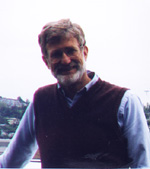 DPS 2000 Kuiper Prize Recipient, Conway Leovy, passed away on July 9, 2011, aged 78. Conway was a prominent planetary scientist with major contributions in our understanding of the terrestrial planets, Mars and Venus, but also of Jupiter and Saturn’s satellite, Titan. In particular, Conway was very actively involved in Mars’ exploration and participated and contributed to the Mariner 6, 7 and 9 missions, the Viking landers and more recently in the Mars Reconnaissance Orbiter. Furthermore, Leovy furthered our knowledge in different branches of Earth’s atmospheric science.
DPS 2000 Kuiper Prize Recipient, Conway Leovy, passed away on July 9, 2011, aged 78. Conway was a prominent planetary scientist with major contributions in our understanding of the terrestrial planets, Mars and Venus, but also of Jupiter and Saturn’s satellite, Titan. In particular, Conway was very actively involved in Mars’ exploration and participated and contributed to the Mariner 6, 7 and 9 missions, the Viking landers and more recently in the Mars Reconnaissance Orbiter. Furthermore, Leovy furthered our knowledge in different branches of Earth’s atmospheric science.
Leovy was Emeritus professor of Atmospheric Sciences and Geophysics at the University of Washington, Seattle.
For his DPS prize see: prizes/2000
He will be sorely missed by his family, colleagues and friends. A more detailed tribute and memorial information related to Leovy can be found at: http://www.atmos.washington.edu/people/leovy
Elisabetta (Betty) Pierazzo 1963-2011
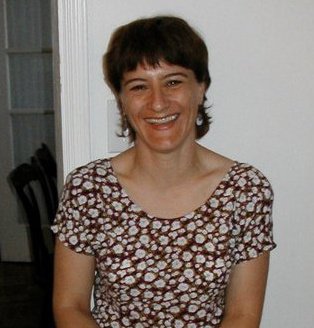 Elisabetta Pierazzo, Senior Scientist at the Planetary Science Institute, died at her home in Tucson, Arizona, on May 15. She was 47.
Elisabetta Pierazzo, Senior Scientist at the Planetary Science Institute, died at her home in Tucson, Arizona, on May 15. She was 47.
Betty was an expert in the area of impact modeling throughout the solar system, as well as an expert on the astrobiological and environmental effects of impacts on Earth and Mars. Her work ranged widely, from providing detailed insights into the Chicxulub impact that caused the extinction of the dinosaurs to putting constraints on the thickness of the ice shell of Jupiter’s moon Europa. She was interested in the rise of life and explored the delivery of organics to planets and Europa by comets as well as the creation of subsurface hydrothermal systems by impacts that may have been favorable sites for life on Mars.
She was also an expert on Meteor Crater in Arizona and made several appearances on national and international broadcasts of programs including National Geographic specials, explaining the formation of this well-known structure. Betty was innovative, rigorous and systematic in her approach to science. She recognized the need for benchmarking and validating the different complex numerical codes to model impact and explosion cratering, organizing and leading a community effort to accomplish this major task. In addition to her science, Betty passionately promoted science education and public outreach. She took time away from her successful research career to teach undergraduates at the University of Arizona, she developed interactive websites and impact rock and meteorite kits for classroom use, as well as created professional development workshops for elementary and middle school science teachers.
Betty arrived in the United States in 1989 from Italy and the following year attended graduate school at the Department of Planetary Sciences at the University of Arizona. She handled the difficulties of living in a foreign country by opening her house and her kitchen to others. She received her Ph.D. in 1997. The quality of her graduate work was recognized by the University of Arizona with the Gerard P. Kuiper Memorial Award. She continued at the University of Arizona as a Research Associate, and in 2002 joined the Planetary Science Institute as a Research Scientist. She was promoted to Senior Scientist in 2007.
Betty was an active member of the planetary community. She served on numerous NASA review panels, was an associate editor of Meteoritics and Planetary Sciences, reviewed papers for numerous scientific journals, served as organizer of workshops and meetings on impact cratering held around the world, and was an organizer of the 2007 Meteoritical Society Meeting held in
Tucson, Arizona.
Betty was noted for the intensity with which she approached both life and work. Whether it was in the office, the classroom, on the volleyball court, the soccer field, or dance floor, her enthusiasm and joy in the activity was irresistible. She was cherished by very many people for her staunch friendship and support. She inspired countless people as a colleague, teacher, mentor and friend. Her life was even more brightened with her marriage to Keith Powell in 2007.
Over the past six months, Betty battled a rare form of cancer. She dealt with it aggressively, and never let it overwhelm her. She was always looking towards the future. In the last week of her life, in the midst of chemotherapy, she was grading class papers, working on research papers, writing reviews and preparing education proposals with her colleagues, all the while finding time to spend precious moments with her family and friends. She was ultimately and suddenly struck down by a pulmonary embolism.
Her loss is great to all those who knew her and worked with her. Hers is a great loss to the Planetary Science Institute and to our profession. We are grateful to her husband, Keith, and to her family for the time she did have with us.
[from the obituary posted on the Planetary Science Institute website]
Baruch S. Blumberg 1925-2011
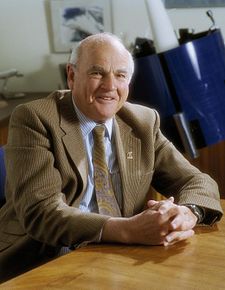 Baruch Blumberg, who headed the NASA Astrobiology Institute from 1999 to 2002, and won the 1976 Nobel Prize in Medicine for identifying the Hepatitis B virus, has died, at the age of 85, on April 5, 2011.
Baruch Blumberg, who headed the NASA Astrobiology Institute from 1999 to 2002, and won the 1976 Nobel Prize in Medicine for identifying the Hepatitis B virus, has died, at the age of 85, on April 5, 2011.
The DPS recognizes the loss of a remarkable person and his contribution in several scientific communities, from Medicine to being the first permanent NASA Astrobiology Institute’s Director.
He will be sorely missed.
James Elliot 1943-2011
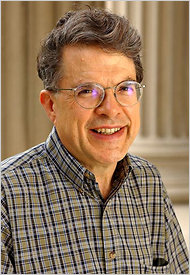 James L. Elliot, Professor of Planetary Astronomy and Physics at MIT, has passed away Wednesday night March 2, 2011. Jim was one of the pioneers in using stellar occultations to probe planetary atmospheres and the physical properties of small bodies in the outer solar system and beyond. Among his accomplishments are the discoveries of the ring system of Uranus and the atmosphere of Pluto. He received his undergraduate degree from MIT in 1965 and his Ph.D. from Harvard in 1972. Before returning to MIT in 1978, he was a postdoc and faculty member in the Astronomy Department of Cornell University. Jim was a wonderful mentor and teacher, and was especially supportive of women in astronomy. We will miss him deeply.
James L. Elliot, Professor of Planetary Astronomy and Physics at MIT, has passed away Wednesday night March 2, 2011. Jim was one of the pioneers in using stellar occultations to probe planetary atmospheres and the physical properties of small bodies in the outer solar system and beyond. Among his accomplishments are the discoveries of the ring system of Uranus and the atmosphere of Pluto. He received his undergraduate degree from MIT in 1965 and his Ph.D. from Harvard in 1972. Before returning to MIT in 1978, he was a postdoc and faculty member in the Astronomy Department of Cornell University. Jim was a wonderful mentor and teacher, and was especially supportive of women in astronomy. We will miss him deeply.
Donald Hunten 1925-2010
 Donald Mount Hunten passed away on the 14th of December, 2010.
Donald Mount Hunten passed away on the 14th of December, 2010.
He was born in Montreal, before his family moved to London, Ontario where Don attended the Western Ontario University In 1946 he enrolled in the Ph.D. program at McGill University, back in Montreal, where he obtained his PhD in 1950. He later became assistant professor at the University of Saskatchewan. After Joe Chamberlain moved to Kitt Peak National Observatory in Tucson to form a space research group, he invited Don to join it and so Don moved to Tucson. In 1974 he became professor at the Lunar and Planetary Lab. In 1982 he was inducted into the National Academy of Sciences and he eventually became a Regents Professor at LPL, UA.
Borrowing from a citation by T. Owen at the 1998 John Adam Fleming Medal of the American Geophysical Union honoring Don:
Donald M. Hunten is a model for all of us engaged in the study of planetary atmospheres. He is first of all a superb scientist, one of the finest aeronomers our planet has produced. He is that rare combination of instrumentalist, observer, theorist, and responsible representative of his field that makes a “compleat” scientist. Don’s contributions are evident everywhere in the record of terrestrial and planetary aeronomy. In the 1950s, he was preeminent among those who developed the ground-based instruments that obtained the spectra required for an understanding of the excitation of Earth’s airglow and aurora, and he also developed the theories that explained the data. In the early 1960s, he contributed to the deflation of the Martian atmosphere by demonstrating the weak points in earlier attempts to derive the red planet’s surface pressure. Don was the godfather of the Pioneer Venus mission and a key scientist in its highly successful implementation and the analysis of the results.
One of his greatest achievements was the development of the theory of diffusion-limited escape and the subsequent analysis of escape of hydrogen from the planets Turning to the outer solar system, Don developed a model for the atmosphere of Titan prior to the Voyager 1 encounter in 1980 that was so good it became the standard after the data came in confirming it. With his extraordinary intuition and insight, he had correctly surmised that Titan must have a massive, molecular nitrogen atmosphere, well before there was any detection of N or N2 on this intriguing satellite. In the following decade, Don used his excellent grasp of physics together with his extensive experience in deep space missions to play a critical role in the design of the Cassini-Huygens mission, now safely on its way to Saturn and
Titan.
Don Hunten also worked on the analysis of data from the Galileo Probe into Jupiter’s atmosphere and investigated the tenuous, gaseous envelopes around Mercury and the Moon. He has been an inspiration and a mentor for many of the currently confirmed planetologists.
Materials from the Donald Hunten memorial session at the 2011 DPS conference:
Brian Marsden 1937-2010
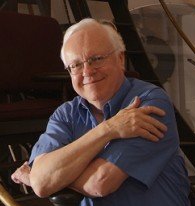 Brian Geoffrey Marsden was born on August 5, 1937, in Cambridge, England. He was an undergraduate at New College, University of Oxford. By the time he received his undergraduate degree, in mathematics, he had already developed somewhat of an international reputation for the computation of orbits of comets, including new discoveries, and spent part of his first two undergraduate summer vacations working at the British Nautical Almanac Office.
Brian Geoffrey Marsden was born on August 5, 1937, in Cambridge, England. He was an undergraduate at New College, University of Oxford. By the time he received his undergraduate degree, in mathematics, he had already developed somewhat of an international reputation for the computation of orbits of comets, including new discoveries, and spent part of his first two undergraduate summer vacations working at the British Nautical Almanac Office.
After Oxford, in 1959, he worked at the Yale University Observatory, where he started computing the orbits of comets. Recalling his earlier interest in Jupiter’s moons, he completed the requirements for his Ph.D. degree with a thesis on “The Motions of the Galilean Satellites of Jupiter”. At the invitation of director Fred Whipple, he joined the staff of the Smithsonian Astrophysical Observatory in Cambridge, Massachusetts in 1965 where he developed a way to incorporate forces over and above those of gravitation directly into the equations that governed the motion of a comet. It is noteworthy that the procedure devised and developed by Marsden is still widely used to compute the non-gravitational effects of comets, with relatively little further modification by other astronomers.
Marsden succeeded Dr. Owen Gingerich as the CBAT director in 1968 and in 1978 the IAU asked him to also take over the direction of the MPC.
Marsden was also interested in the “transneptunian objects”. More specifically, he was the first to suggest, correctly, that three further transneptunian objects discovered in 1993 were exactly like Pluto in the sense that they all orbit the Sun twice while Neptune orbits it thrice. This particular recognition set him firmly on the quest to “demote” Pluto. Success required the discovery of transneptunian objects more comparable to Pluto in size, something that finally happened in 2005 with the discovery of the object that came to be known as Eris. At its triennial meeting in 2006 in Prague, the IAU voted to designate these objects, together with two further transneptunian objects now known as Makemake and Haumea, as well as the largest asteroid, Ceres, members of a new class of “dwarf planet”. It was also at the IAU meeting in Prague that Marsden stepped down as MPC director, and he was quite entertained by the thought that both he and Pluto had been retired on the same day.
Marsden served as an associate director of the Harvard-Smithsonian Center for Astrophysics for more than 15 years; he was chair of the Division of Dynamical Astronomy of the American Astronomical Society during 1976-1978 and president of the IAU commissions that oversaw the operation of the minor Planet Center (1976-1979) and the Central Bureau for Astronomical Telegrams (2000-2003). He continued to serve subsequently on the two solar-system nomenclature committees of the IAU, being the perennial secretary of the one that decides on names for asteroids. He also continued to publish a “Catalogue of Cometary Orbits”, the first of these having appeared in 1972 and its successors roughly at intervals of two years.
B. Marsden passed away on 18 November and will be sorely missed by our community.
Tom Ahrens 1936-2010
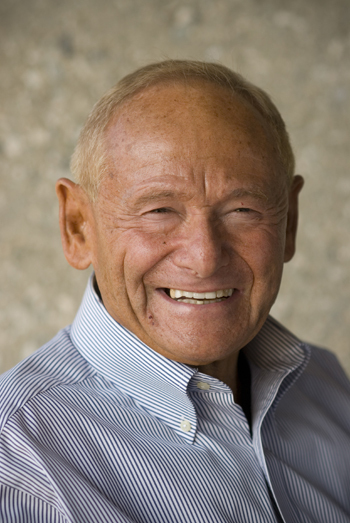 Thomas J. Ahrens, one of the leading figures in mineral physics, geophysics, and planetary sciences during the Twentieth Century and a member of the Seismological Laboratory, passed away on November 24, 2010 at the age of 74.
Thomas J. Ahrens, one of the leading figures in mineral physics, geophysics, and planetary sciences during the Twentieth Century and a member of the Seismological Laboratory, passed away on November 24, 2010 at the age of 74.
Ahrens spent more than forty years at Caltech and was the Fletcher Jones Professor of Geophysics, Emeritus when he passed away. His vast research accomplishments and impact touched on the origin, differentiation and evolution of the Earth and planets. An experimentalist at heart, he was widely known for starting and leading the Lindhurst Laboratory of Experimental Geophysics. Through the more than thirty graduate students and fifteen post docs and visiting associates he mentored, his impact on science will be felt for many years to come.
Born in Germany, Ahrens received his BS from the Massachusetts Institute of Technology in 1957, his MS from Caltech in 1958, and his PhD from Rensselaer Polytechnic Institute in 1962. He was a geophysicist with the Pan American Petroleum Corporation from 1958 to 1959, worked as a second lieutenant for the U.S. Army in the Ballistics Research Laboratory from
1959 to 1960, and was the head of the geophysics section in the Poulter Laboratory of the Stanford Research Institute from 1962 to 1967. He became professor of geophysics in 1976 and was the W. M. Keck Foundation Professor of Earth Sciences from 1996 to 2001. In 2004, he was named the Fletcher Jones Professor of Geophysics and became Jones Professor, Emeritus, in 2005. He made the link between the Earth’s seismic structure, its composition, and its physical properties. Exploring the pressures and temperatures opened by the shock wave facility, he and his associates determined the first experimentally based equations of the state of the deep mantle and core and made the first experimentally based estimates of the temperature of the core.
